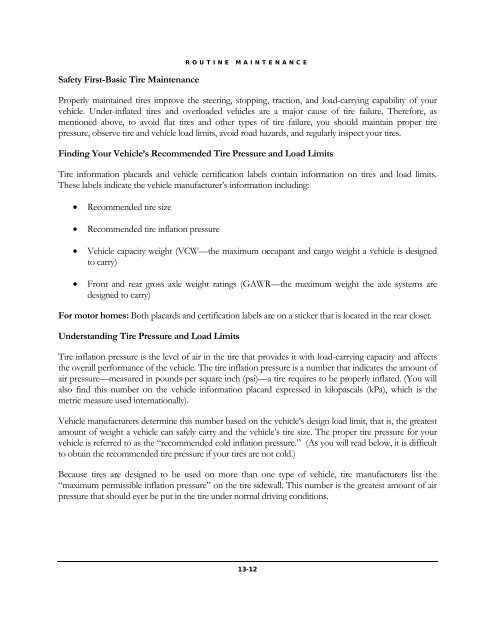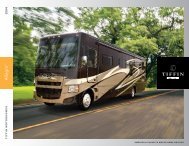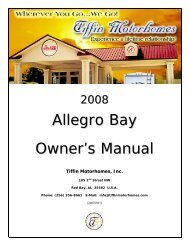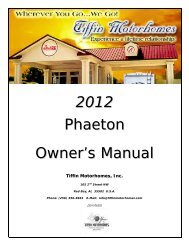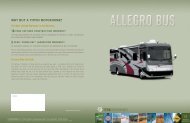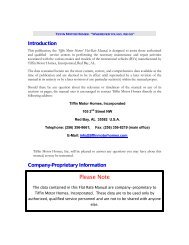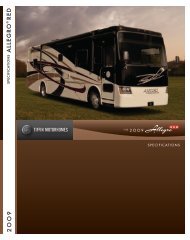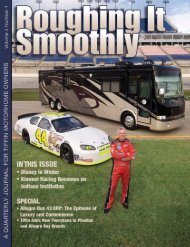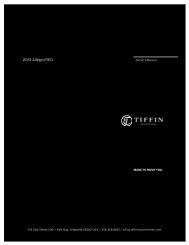Phaeton Owner's Manual - Tiffin Motorhomes | Wherever You
Phaeton Owner's Manual - Tiffin Motorhomes | Wherever You
Phaeton Owner's Manual - Tiffin Motorhomes | Wherever You
- No tags were found...
You also want an ePaper? Increase the reach of your titles
YUMPU automatically turns print PDFs into web optimized ePapers that Google loves.
Safety First-Basic Tire MaintenanceROUTINE MAINTENANCEProperly maintained tires improve the steering, stopping, traction, and load-carrying capability of yourvehicle. Under-inflated tires and overloaded vehicles are a major cause of tire failure. Therefore, asmentioned above, to avoid flat tires and other types of tire failure, you should maintain proper tirepressure, observe tire and vehicle load limits, avoid road hazards, and regularly inspect your tires.Finding <strong>You</strong>r Vehicle’s Recommended Tire Pressure and Load LimitsTire information placards and vehicle certification labels contain information on tires and load limits.These labels indicate the vehicle manufacturer’s information including:Recommended tire sizeRecommended tire inflation pressureVehicle capacity weight (VCW—the maximum occupant and cargo weight a vehicle is designedto carry)Front and rear gross axle weight ratings (GAWR—the maximum weight the axle systems aredesigned to carry)For motor homes: Both placards and certification labels are on a sticker that is located in the rear closet.Understanding Tire Pressure and Load LimitsTire inflation pressure is the level of air in the tire that provides it with load-carrying capacity and affectsthe overall performance of the vehicle. The tire inflation pressure is a number that indicates the amount ofair pressure—measured in pounds per square inch (psi)—a tire requires to be properly inflated. (<strong>You</strong> willalso find this number on the vehicle information placard expressed in kilopascals (kPa), which is themetric measure used internationally).Vehicle manufacturers determine this number based on the vehicle’s design load limit, that is, the greatestamount of weight a vehicle can safely carry and the vehicle’s tire size. The proper tire pressure for yourvehicle is referred to as the “recommended cold inflation pressure.” (As you will read below, it is difficultto obtain the recommended tire pressure if your tires are not cold.)Because tires are designed to be used on more than one type of vehicle, tire manufacturers list the“maximum permissible inflation pressure” on the tire sidewall. This number is the greatest amount of airpressure that should ever be put in the tire under normal driving conditions.13-12


